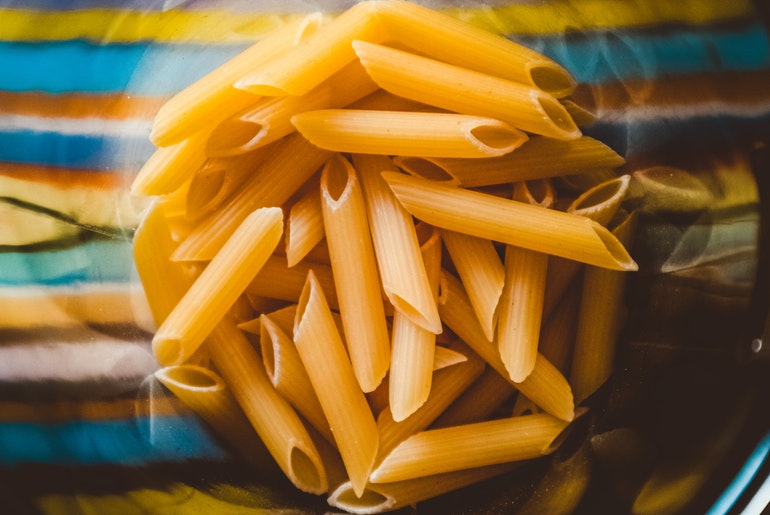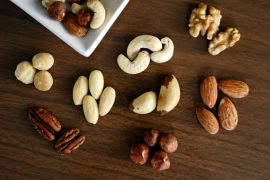The lack of carbohydrates can make you a little crazy͛. Tom Hardy – Actor and Producer
There are two kinds of complex carbs that will fuel your body best over the long haul. The first is starch, and it is longer-lasting than bad carbs because it needs to be broken down in your body’s digestive system before it turns into glucose. You get it when you eat vegetables like potatoes, peas, corn and dry beans and breads, cereals and grains. The second kind of complex carb is dietary fiber.
There are two kinds of dietary fiber: soluble and insoluble (roughage). Fiber from vegetables, fruits and whole grain foods. Specific foods high in soluble fiber include oatmeal and oat bran, dried beans and peas, nuts and seeds, fruits like apples, pears, strawberries and blueberries. Insoluble fiber comes from fruits and most vegetables, whole wheat bread, barley, brown rice, wheat bran, couscous, whole grain cereals, and seeds.
Unlike soluble fiber, insoluble fiber, (what your grandparents called roughage) does not dissolve in water. You need a healthy amount of insoluble fiber in your diet because it is what gives you a feeling of being full and it also feeds the good bacteria in your gut. It serves as kind of an interior sponge in your body, soaking up to 15 times its weight in water, and stopping you from wanting to eat more. The importance of fiber in our diets caught the attention of doctors in England just after 1890 when they witnessed a whole range of common diseases flaring up in the time after a new milling process removed fiber from traditional whole grain flour to produce white flour.
How much fiber should you eat each day? According to the Centers for Disease Control and Prevention, the average adult needs 14 grams of dietary fiber per 1000 calories eaten each day. The United States Department of Agriculture offers a great free website to help each person individually calculate how many calories they need each day. You just plug in your height, weight and some details and get your own personal nutritional information. If you are trying to figure out how much fiber your child needs daily, a simple and effective formula is to divide their age by 10. The answer will yield the number of grams of fiber needed.
When you are trying to avoid simple sugars that give you a fast energy fix but don’t sustain your body, you must look at food labels for a variety of words other than sugar or white or brown sugar or even raw sugar or invert sugar. Other words that also mean sugar are corn sweetener or corn syrup, dextrose, fructose, fruit juice concentrates, glucose, high-fructose corn syrup, honey, lactose, maltose, malt syrup, molasses, sucrose and syrup. Become a label detective. If you see any of these words, you can translate the word sugar immediately. And the closer they are listed to the top of the label, the higher component of sugar there is the food you are considering. Food processors also have tricks when it comes to making foods look healthy when they are not.
If you are trying to purchase whole grain bread or cereal, for example, you may find confusing terms like cracked, crushed or flaked grain and wonder if the nutritional value is the same. As a general rule of thumb, look for the term whole grain. The term refined grain means some of the nutrients have been removed, enriched grain means some of the nutrients have been removed and then returned. Check the list of ingredients and ensure that the actual words whole grains are listed first if you are not sure. In every country of the world, you can find whole grains, although they may come under names you are unfamiliar with. Triticale is a mixture of wheat and rye, and bulgur is a wheat in which the kernels have been steamed, dried and crushed. Millet is a common whole grain found in Africa and Asia and quinoa is more commonly used in South America. Go to your local health food store and experiment with different types of whole grains in your diet. You will not only be giving your body the fuel it needs, but you could also improve your mood.
Effective Repair
1. Begin your morning with a whole grain breakfast cereal topped with fresh fruit.
2. Check food labels when you shop to avoid buying high-sugar products under different names. Ensure that the products you think are whole grain actually are.
3. Keep a bowl of washed and prepared vegetables in your refrigerator for quick pick-me-up snacks throughout the day, instead of reaching for high-carb energy spiking foods.
4. Eat whole fruit (just wash well, particularly if not organic) rather than drink fruit juice. Your body needs the fiber.
5. Make sure fresh vegetables fill half your plate at each meal.
6. Incorporate more meatless meals into your eating plan by experimenting with different kinds of whole grains and dried beans or peas. Normally, food should travel through your body in about three days. The longer it takes the higher risk you have of enduring ulcers, diverticular disease (reabsorbing toxins that are meant to be eliminated) and other gastrointestinal diseases.





